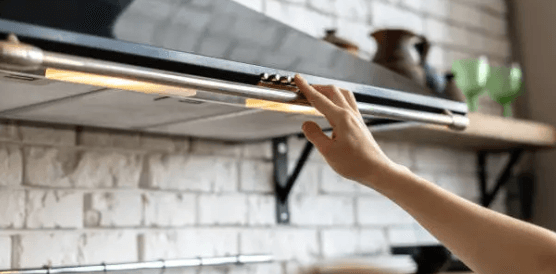How to Plan a Ventilation-Friendly Modular Kitchen Design
By Team Modula • 6/20/2025

Tired of smoke, smells and sticky walls after every meal?
If you have ever cooked a heavy tadka or fried bhajiyas in a closed kitchen, you already know: poor ventilation is a recipe for disaster. Walls turn yellow, cabinets become dirty, and your entire house begins to smell like your lunch hours later.
Without adequate ventilation, a kitchen quickly becomes uncomfortable but the good news is that you don't have to decide between a breathable kitchen and a stylish one. Both are possible (and desirable).
Your Ventilation Checklist for a modular kitchen is here!
1. Choose a Chimney That Matches Your Cooking Habits
Not every chimney is created equally and if you prepare Indian food on a daily basis, you need a chimney that can withstand it. Look for chimneys with 1000 m³/hr suction power or more if your home frequently uses oil, spices, and deep-frying.
Additionally, opt for auto-clean models if you're sick of sticky vents. Yes, they are slightly more expensive, but they are ultimately well worth the money.
2. Don’t Skip the Exhaust Fan
Some smoke, steam, and odors still persist even with the best chimney. Here's where a simple exhaust fan comes in handy.
It helps move stale air out of the kitchen, which is particularly helpful when cooking for extended periods of time. Put it next to a window or on the wall across from your chimney. The result? a kitchen that feels cooler, lighter and cleaner even after intensive cooking.
3. Make the Most of Windows
The placement of a window can have a significant impact. Aim to keep your kitchen from being totally sealed off. Have at least one window close to the stove area if at all possible.
Use mesh-screened sliding windows for extra convenience. These are essential in most Mumbai homes because they allow air to enter while keeping mosquitoes out.
4. Don’t Seal Cabinets to the Ceiling
Although full-height cabinets have a sleek appearance, they can retain heat, particularly if there isn't any space for air to circulate above or behind them.
To let heat escape, leave a tiny space of 6 to 8 inches between tall units and the ceiling.
Asking your modular kitchen designer to leave air channels behind cabinet units particularly those near cooking zones is another option.
5. Use Glass or Louvered Shutters
Odors and heat can occasionally be trapped in closed cabinets. Think about installing some louvered doors or glass shutters in your upper cabinets.
They allow you to store commonplace items in plain sight, encourage air circulation, and break up visual heaviness.
It's a small adjustment, but it makes a big difference, particularly in small galley-style kitchens.
Final Thoughts
Comfort, hygiene and the long-term viability of your modular kitchen are all impacted by adequate ventilation, which goes beyond convenience. After a long day at work, nobody wants to stand in a stuffy kitchen.